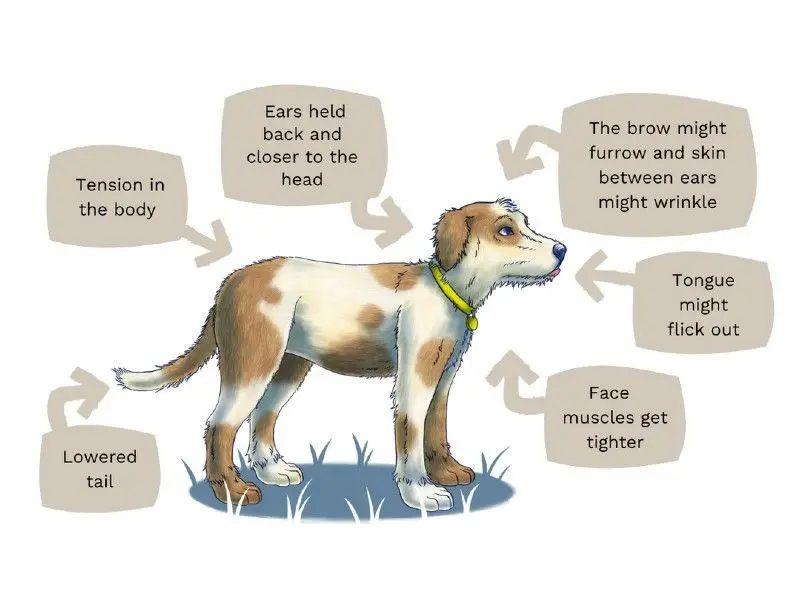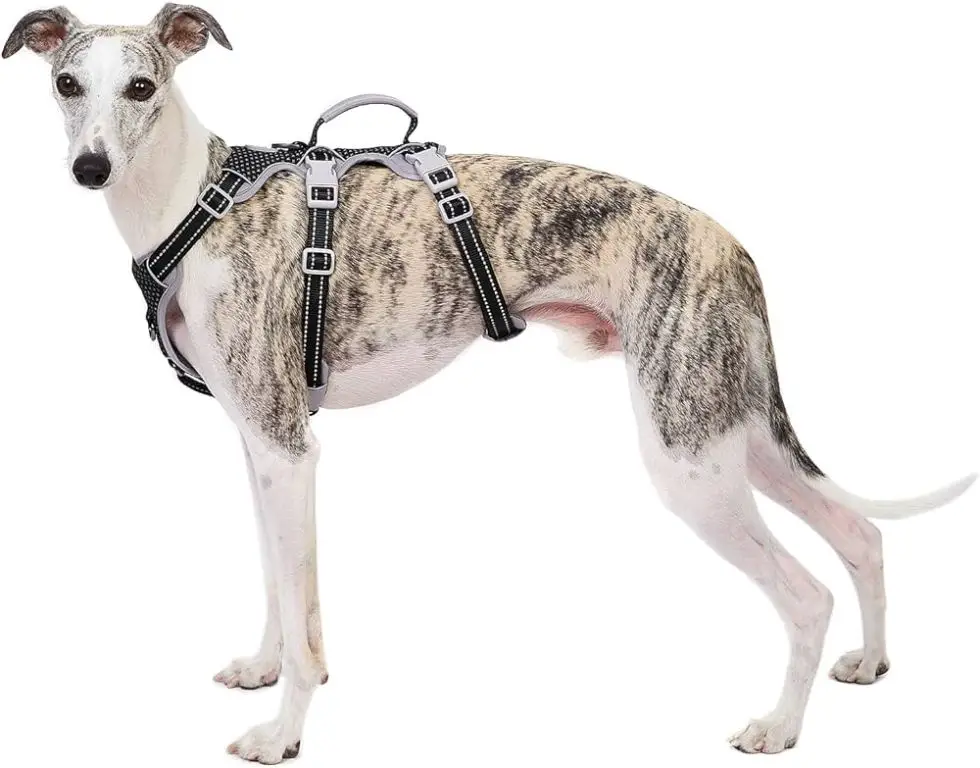Introduction
Traveling in vehicles can cause anxiety for many dogs. The motion of the vehicle, unfamiliar smells, and inability to move freely can all trigger fear and stress. Anxious dogs may pant, drool, whine, bark, pace, vomit, urinate, or even become aggressive while riding in cars. This not only creates an unpleasant travel experience for both the dog and owner, but also poses safety risks if the dog is unsecured.
To keep dogs with car anxiety safe, it is essential to restrain them properly using some type of car restraint system. The right restraint can help minimize a dog’s anxiety triggers while also preventing dangerous behavior like jumping around or bolting out of an open door or window. When choosing a car restraint for an anxious dog, owners must balance the dog’s need for containment and security with considerations for comfort. The goal is to find an option that provides both control and calm.
Signs of Car Anxiety
Dogs with car anxiety often exhibit obvious symptoms while in the car or when getting ready to go for a drive. Some common signs of car anxiety in dogs include:
- Panting – Rapid dog panting is a key sign of stress.
- Drooling – Excessive drooling can indicate nausea or extreme stress.
- Pacing – Dogs may pace around the car and be unable to settle down.
- Vomiting – Motion sickness can cause some dogs to vomit in the car.
- Hiding – Anxious dogs may try to hide under or behind car seats.
- Trembling – Shaking or shivering can point to fear and anxiety.
Paying attention to these signs can help determine if your dog is struggling with car anxiety and needs help. The sooner the issue is addressed, the faster your dog can learn to feel calm and comfortable on car rides.

Causes of Car Anxiety
There are a few main causes of car anxiety in dogs:
Motion Sickness – Just like people, dogs can experience motion sickness in vehicles. The motion of the car can overstimulate their vestibular system and cause nausea, drooling, vomiting, etc. Puppies and young dogs tend to be more susceptible to car sickness.
Lack of Habituation – Dogs that aren’t frequently exposed to car travel from a young age often develop anxiety associated with it later in life. They simply don’t get the chance to get accustomed to the motions and sounds of the car.
Nervous Personality – Highly timid, nervous or sensitive dogs are predisposed to being anxious during car rides. Loud noises, unfamiliar environments, and irregular motions can easily overwhelm them.
There are also other less common causes like inner ear disorders. But motion sickness, lack of habituation, and nervous dispositions are the most prevalent reasons dogs develop car anxiety.
Preventing Car Anxiety
There are several methods you can try to prevent or reduce car anxiety in dogs:
Desensitization Training
One of the most effective ways to prevent car anxiety is through desensitization training. This involves slowly exposing your dog to the car in a positive, rewarded way. For example, start by just sitting in the car with your dog and giving treats. Then, turn on the engine and continue rewarding calm behavior. Slowly build up to short drives around the block, then longer drives, while praising and rewarding your dog throughout the process. The goal is to counter-condition your dog to associate the car with good things, not fear.
Pheromone Collars
Synthetic pheromone collars like Adaptil are designed to have a calming effect on dogs. They are infused with “dog appeasing” pheromones that can help relieve stress. Studies show pheromone collars can help minimize reactions to triggers like car rides. Put one on your dog before driving to see if it provides any anxiety relief.
Medication

If your dog has severe car anxiety and desensitization hasn’t helped, your vet may recommend anti-anxiety medication. There are several types that can be used specifically for car travel. Sedatives like acepromazine can calm your dog during the car ride. Longer-term anti-anxiety meds like fluoxetine may also be prescribed. Your vet can help determine if medication could help ease your dog’s car anxiety.
Containment vs. Calming
When a dog experiences anxiety in the car, owners often debate whether it’s better to physically contain them or try to calm them emotionally. Both approaches have merits.
Containment methods like crates or harnesses restrict the dog’s movement, which prevents them from jumping around, pacing anxiously, or distracting the driver. However, they don’t actually address the underlying fear. The dog may still feel very stressed even if they can’t act out on it.
Calming techniques like pheromone diffusers, calming treats, or toys don’t physically restrain the dog. But they can help relieve anxiety by creating a more soothing environment. This gets to the root of the problem instead of just managing symptoms. However, some very anxious dogs may still need more physical containment.
In many cases, combining the two approaches is most effective. A snug-fitting harness creates a sense of security, while a lick mat spreads calming pheromones. Finding the right balance depends on each individual dog’s needs.
Harnesses vs. Crates
When it comes to securing your anxious dog safely in the car, you have two main options – harnesses and crates. Both have their pros and cons for anxious dogs.
Harnesses allow your dog more freedom of movement, which can help minimize anxiety in some dogs who feel trapped in a crate. However, harnesses provide less physical restraint than a crate, so they may not be suitable for extremely anxious dogs who are prone to panicking and trying to jump out of the car.
Crates physically contain the dog and prevent jumping or escaping. The enclosed space also provides a den-like comforting environment for some dogs. However, for claustrophobic or fearful dogs, being locked in a crate can provoke more anxiety. Proper crate training and a larger crate with visibility can help mitigate this.
When deciding between a harness or crate, consider your individual dog’s anxiety triggers and reactions. A dog who scratches and panics in a crate may do better with a harness, while a dog who constantly tries to climb into your lap or bolt out of the car is safer in a secured crate.
You can also use a harness and crate in tandem – putting a harness under the crate to add extra protection in case your dog manages to break out. This provides physical restraint along with some freedom to move and visibility.
The most important thing is understanding your dog’s specific needs and reactions. Pick whatever method keeps your dog secure while minimizing anxiety triggers during travel.
Best Harnesses
When it comes to harnessing your anxious dog in the car, it’s important to look for a few key features:
-
Adjustability – Being able to adjust the straps to properly fit your dog’s unique size and shape will ensure comfort and security.
-
Padding – Padding on the chest and belly straps as well as the chest plate can prevent chafing and rubbing that may increase anxiety.
-
Attachment – Make sure the harness has a sturdy ring on the back for attaching a seatbelt tether.
-
Escape-proof – Look for a vest-style harness with adjustable straps and multiple connection points to prevent slipping and escaping.
-
Durable material – The harness should be made of a sturdy, bite-proof material like nylon or padded polyester.

Some top-rated harnesses to consider are the Kurgo Tru-Fit Smart Dog Walking Harness, RC Pet Products Adventure Harness, and EzyDog Drive Dog Harness, which all meet the criteria above. Properly harnessing an anxious dog can go a long way towards easing their stress in the car.
Best Crates
When selecting a crate for an anxious dog, you’ll want one that provides security, comfort, and visibility. Some key features to look for include:
- Wire crates that allow the dog to see out on all sides.
- Single-piece construction for sturdiness.
- Slide-bolt latches that securely lock the door.
- Rubber feet to prevent sliding during transport.
- Ample ventilation on all sides.
- An interior platform or crate pad for comfort.
- Adjustable divider panels to provide a snug fit.
- Carrying handles and an included travel tray for portability.
- Easy to clean plastic or wire construction.
- Crash testing for use as an in-car crate.
Look for crates designed specifically to limit stress and visibility, like covered airline-approved models. Make sure to size appropriately for your dog’s measurements.
Additional Tips for Helping Dogs with Car Anxiety
In addition to securing your dog safely for the car ride, there are several things you can do to help create a calming environment:
-
Bring along toys or treats that your dog enjoys. Having something familiar to focus on can help ease anxiety.
-
Play calming music to help drown out any outside noises that may be frightening.
-
Use pheromone sprays or diffusers designed specifically for dogs. These release calming pheromones that can reduce stress.
-
Try an anxiety wrap or vest that gently hugs your dog’s body to provide comfort.
-
Cover crates or partially block windows to reduce overstimulation.
-
Schedule stops every few hours on longer trips so your dog can get out to relieve themselves and stretch their legs.

Taking small steps to create a calmer environment can go a long way towards easing your dog’s anxiety during car rides.
When to Seek Help
If your dog’s car anxiety is severe or doesn’t improve with time and training, you may need to consult with your veterinarian or a professional dog trainer. Signs that your dog needs professional help include:
- Aggressive behavior like barking, growling or biting when in the car
- Inability to control urination, defecation or vomiting in the car
- Self-harming behaviors like excessive drooling, panting, pawing, chewing or licking
- Destructive behavior like clawing, chewing or trying to escape
- No noticeable improvement despite consistent training and management techniques
A vet can rule out any underlying medical conditions and may prescribe anti-anxiety medication for short-term use. A certified dog trainer can assess your dog’s behavior and create a customized desensitization training plan. In extreme cases, your vet may recommend talking to a veterinary behaviorist who can design a detailed behavior modification program.
With professional guidance and continued patience and positive reinforcement at home, it is possible to help dogs with even severe car anxiety eventually relax and feel safe during car rides.